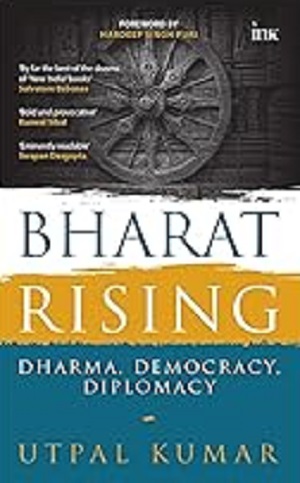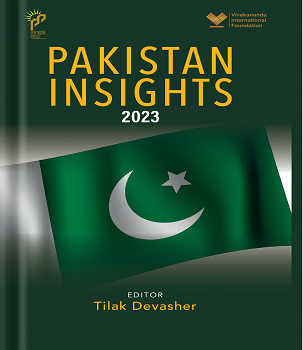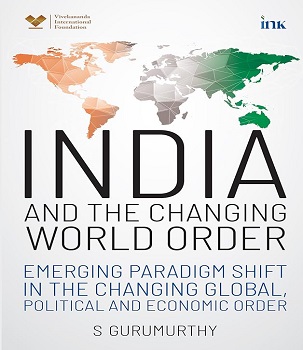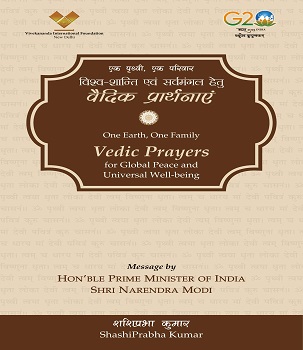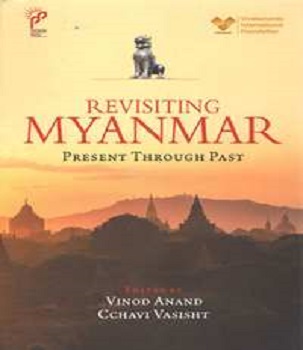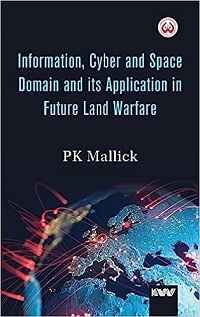The book India’s National Defence defines India’s Defence Reforms and Military Modernisation which it must undertake to meet the strategic challenges of the 21st Century. The book lucidly brings out India’s inability to optimise its military success in its three wars against Pakistan of 1948, 1965 and 1971 as well as the current sub-conventional conflicts in Jammu and Kashmir and the North East.
The purpose of the book is to bring to focus the need for India to take cognisance of its military threats, its huge resources in the form of the Defence and Research Development Organisation (DRDO), Ordnance Factories and Defence Public Sector Undertakings which need to be efficiently managed by the Ministry of Defence. The Ministry of Defence currently has four components. These are Defence, Defence Production, Ex-Servicemen’s Welfare and the DRDO. The book deliberates on methods to be employed to optimise the functioning of these departments as also the three Services in order to stabilise strategic issues facing our country.
The book has two parts: the first part deals with reform of the national defence policy making system and the second part deals with military reforms and modernisation of the military institution. There are five chapters in the either of the parts. Chapter 1 of the First part deals with the onus of defence reforms. The Chapter lucidly brings out the fact that many in our country have a status quo mind set and are comfortable in taking incremental steps when unavoidable. They resist demands from the military institutions and find the current system to be reliable and time tested. They prefer to perpetuate the stranglehold of bureaucracy, finance managers and scientific community over defence policy making in exclusion of the main party, the military. This is a regressive method which the author seeks to correct by arguing the need for correctly understanding security threats and their military implications. The book categorically states that the Indian state’s management of national defence has been far from astute. The country has been lucky so far in preserving her nationhood - barring some territorial losses – without having to invest in military preparedness as commensurate to her difficult situation. The book rightly cautions that time has come to accept that the emerging world order may not be so forgiving in future. Accordingly, there is a need to find appropriate structure for management of national defence and designate that structure to operate an effective system of defence policy making.
Chapter 2 covers Defence Policy making in some advanced nations. It is interesting to understand how defence policy is made in countries like the United States, Russia, United Kingdom, Australia, Germany, China, France and Russia. Each country presents a different perspective but one is impressed how the United Kingdom, whose defence policy India had inherited, has evolved over the years. While India continues with a status quo approach, all countries have a vision with regard to their defence policies. The chapter summarises the advantageous features of the universally adopted policies which could be highlighted as follows:-
• Structuring of rapidly deployable, all arm, inter service forces.
• Strategic transportation.
• Shaping battlefields with precision and standoff fire power.
• C4 I2SR along with space assets.
• Employment of Special Forces.
• Troops trained to be fourth generation warriors.
• Synergy among political, military and civilian organs particularly in peace keeping and stabilisation tasks.
Chapter 3 deals with the evolution of defence policy making in India. The important areas are the orientation post-1962 debacle, the disorientation in the 1990’s and the Kargil shake up followed by Operation Parakram. The Chapter brings out India’s biggest weakness as the lack of a national security strategy which forms the basis of defence policy. This has led to adhoc financial allotments leading to the armed forces remaining partially prepared to deal with contingencies. The ensuing Chapters 4 and 5 deal with reform of the apex level defence structure. It is pertinent to note that currently there is a formally constituted body of grand strategists referred to as the National Security Council. We also have a Secretariat which is referred as National Security Council Secretariat (NSCS). We have a National Security Advisor (NSA) and various consultative bodies in the form of National Security Advisory Board (NSAB) and the Strategy Policy Group (SPG). In addition, we have the Intelligence Coordination Group which tasks and coordinates all intelligence agencies. All nuclear decisions are undertaken by the National Command Authority (NCA) which has a political wing comprising Cabinet Committee on Security (CCS) and an Executive Council comprising the NSA, Service Chiefs, Commander-in-Chief Strategic Forces Command, heads of DRDO and Department of Atomic Energy (DAE). In India, the Ministry of Defence (MOD) is manned by the bureaucracy and headed by a Defence Minister (Raksha Mantri). Neither of them possess the necessary strategic expertise and experience of military functions. The book lucidly points that in theory all these bodies have the option of inviting professional military advice, but in the absence of formal membership of military professionals in the policy making bodies, the decision to exercise that option itself remains in the hands of those who might not always appreciate the necessity. Accordingly, the book recommends suitable reform in the national defence structure and proposes a suggested organisation of MOD to consist of a ‘Department of Defence Forces’ and a ‘Department of Defence Establishments’. A comprehensive structure which includes the Chief of Defence Staff (CDS) and the Joint Theatre Commands is lucidly explained. In addition, the Rules of Business and Procedure are sought to be made result rather than procedure oriented.
The second part of the book deals with military reforms and modernisation of military institution. The first Chapter of Part 2 (Chapter 6) deals with the mandate of India’s military security. The matter of formal promulgation of a national security doctrine through a national security strategy is the topic of discussion of this Chapter. The guiding factors are identifies as ‘deterrence’ and ‘asymmetry’ respectively with regard to Pakistan and China and the concept of investment in the peace dividend. Chapter 7 deals with strategy update and force modernisation. It focuses on the propagation of a comprehensive joint services military doctrine. It also deals with update and adaptations of strategies for the prosecution of integrated military operations. The issues covered include strategic options for Northern and Western borders, effects of nuclear doctrine on conventional strategies, control of insurgencies, force structure, logistics framework and modernisation.
Chapter 8 discusses joint warfare and integration of the Indian military institution. It concentrates on build up and modification of an integrated military force structure in conformity to the military doctrine, while describing joint warfare and its application at the strategic, operational and tactical level. The Chapter also deals with the charter of the CDS and his importance in bringing about jointness. Chapter 9 deals with network centric warfare. The nuances of combat in a network centric warfare and its applicability to the Indian environment are explained. The last Chapter deals with training for modernisation, this being an extremely important facet to absorb the various cognitive and practical facets of modernisation.
The book is an effort to focus on long overdue revamp of national defence. While all aspects have been covered, it needs to be mentioned that turf-guarding by the three services is a major factor in not allowing jointness between the three services to consolidate, and that the political leadership and the bureaucracy have often delayed issues by exploiting this factor.
By all standards, Lt Gen Gautam Bannerjee has authored an excellent book which must be read by all officers of the three Services as well as the policy makers of the Ministries of Home, Defence and External Affairs, and the Prime Minister’s Office, besides the National Security Council Secretariat and the Parliamentary Committee on Defence. It would be pertinent if the External Affairs Minister and the Raksha Mantri are provided a briefing on the aspects mentioned to improve India’s Defence capability.
(* Major General P K Chakravorty is a former Additional Director General of Artillery at Army Headquarters, and a well known strategic analyst.)




